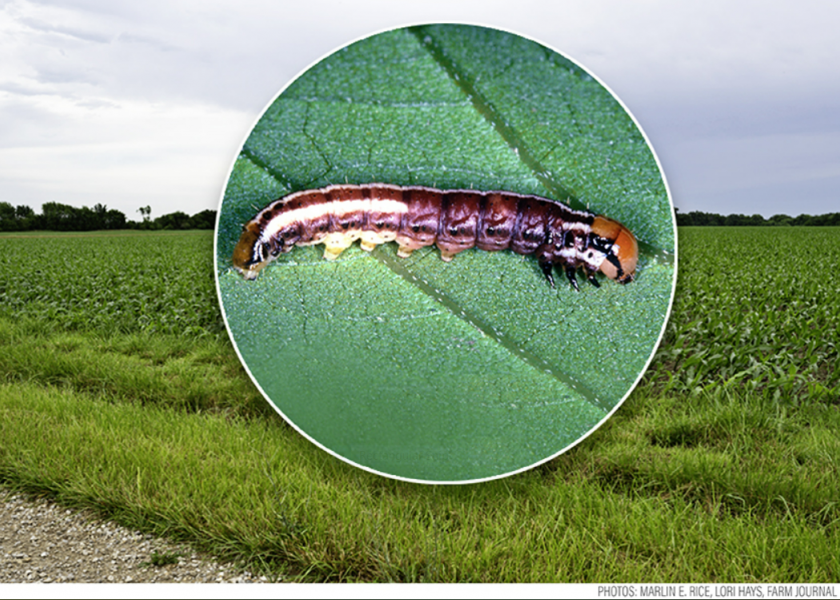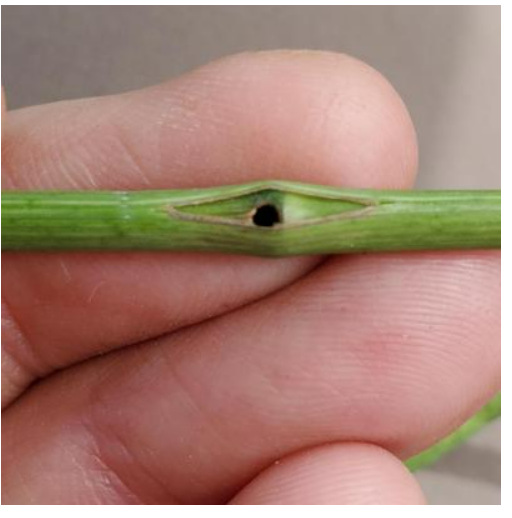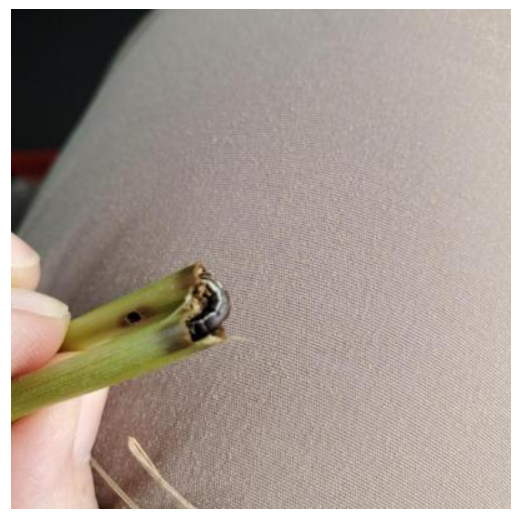Stalk Borer is On the Move. It’s Time to Scout

Given the corn price outlook, this is not the year to ignore any "sometimes a problem" pest like corn stalk borer -- especially if you've encountered it in corn before. It has a tendency to persist in fields where it’s been an issue in previous years, according to Erin Hodgson, Iowa State University Extension entomologist.
“Take a look at field edges now, especially in areas with previous stalk borer infestations.” Hodgson says in an online report. “I would expect stalk borers to move into corn and soybean in central Iowa (this) week.” (see her two caterpillar photos below and read more at https://bit.ly/3OzvFFO)

“As the larvae get too big to stay inside smaller plants, they start looking around for a better host and that is when they infest corn,” says Bob Wright, University of Nebraska Extension entomologist.
How Damage Occurs
According to the Penn State Agronomy Guide, stalk borers attack young corn plants in one of two distinct ways:

2. The larvae crawl to near the tops of the plants and eat their way through the rolled leaves down into the stalks, leaving a few ragged holes in the leaves and small amounts of sawdust-like frass on the leaves. Leaf wilting in the top half of the plant is an early symptom.
Common stalk borer caterpillars injure corn when feeding on early developmental stages (VE through V5).
Infestations are typically observed in the first four to eight rows that are adjacent to grassy areas, according to Adam Varenhorst, South Dakota State University Extension entomologist.
Calculate Degree Days
Wright says sufficient growing degree days have accumulated in southeast Nebraska the pest is beginning to enter cornfields.
“We’re telling people here to scout and look for injury. If there’s damage along field borders, it may be time to treat,” he says. “Be sure to consider the degree day accumulation for your specific area as you scout.”
The hatching and movement of common stalk borer caterpillars can be estimated by using degree days with a development threshold of 41°F.
Common stalk borer eggs typically begin to hatch at 575-degree days, according to Varenhorst.
He says the caterpillars finish hatching and begin development on weeds and grasses at 750-degree days. At 1300-degree days, 10% of the caterpillars will begin moving to corn. Corn should begin to be scouted at this point. At 1400-degree days, 50% of the caterpillars will or have moved into corn.
As a reminder, Vanderhorst says the equation for degree days is: (Maximum Daily Temperature + Minimum Daily Temperature) ÷ 2 - The Developmental Threshold
Timing of foliar insecticide applications is critical. They are only effective when the larvae are on the move and exposed to the pesticide, Hodgson says.
Attend the 2022 Farm Journal Corn and Soybean College
Ferrie: ID Your Agronomic Issues to Grow More Bushels
Farm Journal Test Plots: How the Right Hybrid Pays Off







